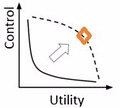Welcome back to Upstream Ag Insights!
This weeks index is as follows:
AgriFood Tech Investment Continues to Climb
Precision Agriculture Data Ownership May Be a Moot Point (*my favourite)
Utility vs Control Curve in Data
Agrochemical Trends in R&D
Lindsay Creates the Smart Pivot
Bayer and Blockchain Technology
Mobile Phones and Precision Technology Adoption
Moder…

